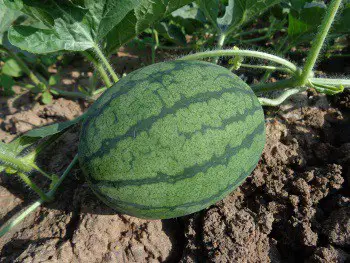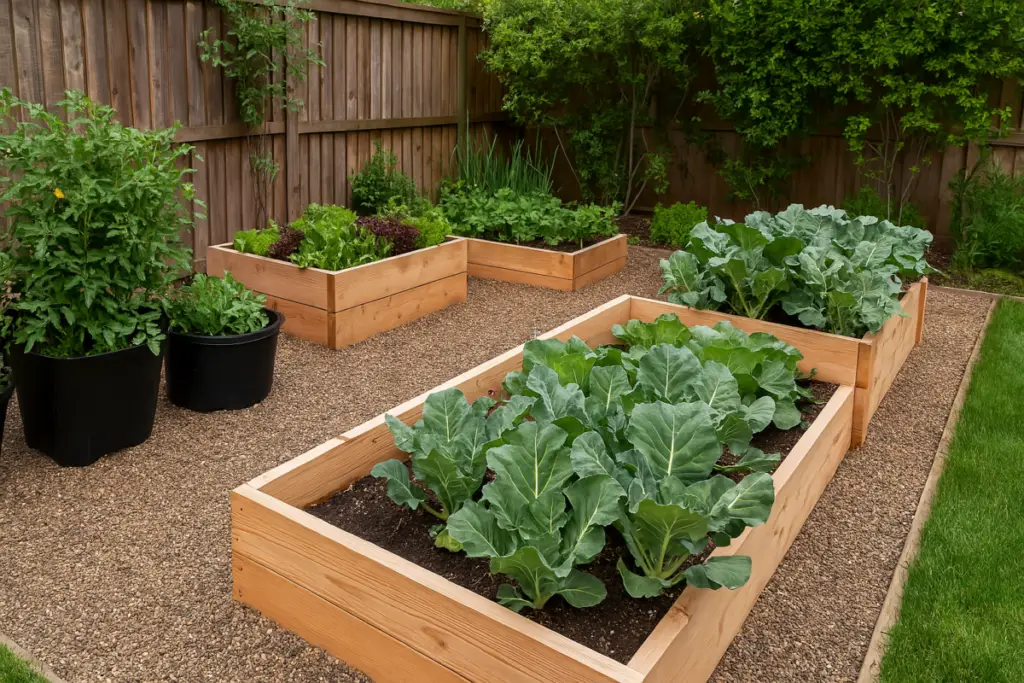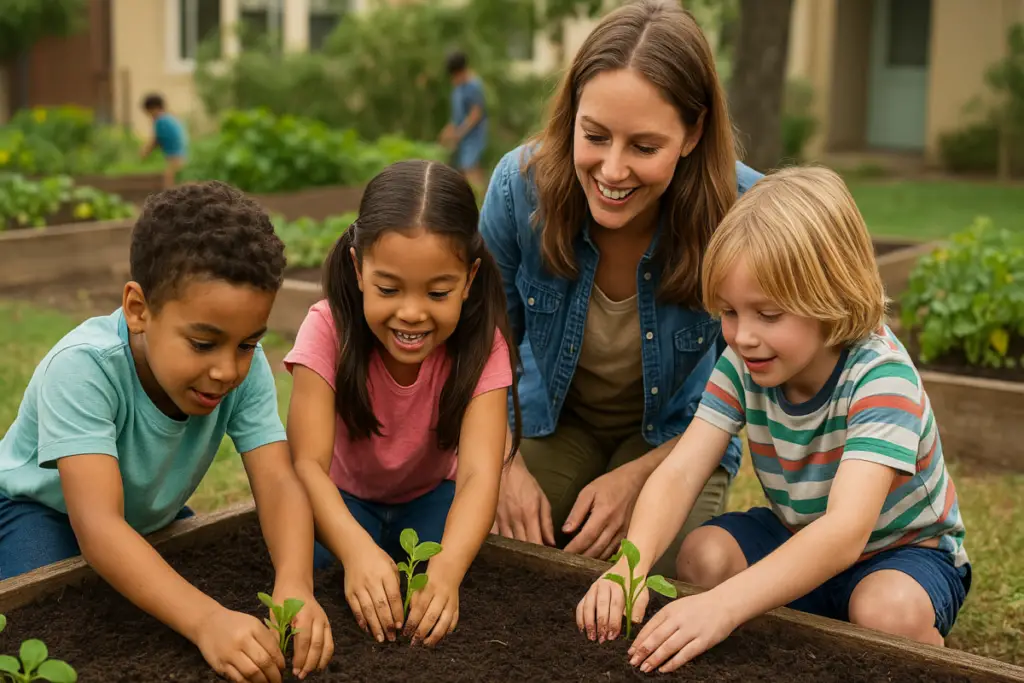
Growing Your Own Veggies? It’s Easier—and More Rewarding—Than You Might Think
There’s just something special about plucking a fresh tomato off the vine or spotting that first sprout pushing up through the soil. Vegetable gardening isn’t just about food—it’s about freedom, pride, and getting your hands a little dirty while doing something good for your health, wallet, and the planet.
Whether you’ve got a big backyard or just a few pots on the patio, starting your own vegetable garden is one of the most satisfying things you can do. Not only can it save you money on groceries, but it’s also a solid way to get more fresh, organic produce onto your plate without relying on store-bought labels. And let’s be honest—homegrown veggies just taste better.
But the benefits go way beyond what’s on your plate. Studies show that gardening helps reduce stress, improve physical health, and even boost mental well-being. Plus, you’ll be cutting down on packaging waste, food miles, and all the other environmental baggage that comes with store-bought produce.
In this article, we’ll walk through the top rewards of vegetable gardening, from health perks and cost savings to emotional wins and community connection. And don’t worry—we’ll keep things simple, practical, and down-to-earth, just like any good garden should be.
Ready to get growing? Let’s dig in. 🌱
Health Benefits of Vegetable Gardening
There’s more to gardening than just fresh cucumbers and juicy tomatoes. Turns out, growing your own food can be one of the healthiest habits you pick up—both for your body and your mind.
🌿 Physical Health Perks
Gardening keeps you moving, lifting, bending, digging—it’s all part of the fun. You won’t need a gym membership to break a sweat.
- Boosts heart health – Just 30 minutes of gardening can count as moderate-intensity exercise according to the CDC .
- Improves strength and flexibility – Repetitive activities like squatting, weeding, and carrying watering cans give your muscles a good workout.
- Supports immune function – Exposure to soil bacteria like Mycobacterium vaccae may actually help regulate your immune system.
Quick Tip: No need to overdo it—just a little time in the garden a few days a week adds up.
🌞 Mental and Emotional Well-Being
Spending time in the garden can have profound effects on mental health. The act of nurturing plants and being in nature contributes to emotional well-being.
Positive impacts:
- Stress Reduction: Gardening has been linked to lower cortisol levels, the hormone associated with stress.
- Mood Enhancement: The satisfaction of growing your own plants can lead to increased feelings of happiness and accomplishment.
- Mindfulness and Relaxation: The repetitive nature of gardening tasks promotes mindfulness, helping individuals stay present and focused.
🥦Nutritional Advantages
Growing your own vegetables ensures access to fresh, organic produce, encouraging healthier eating habits.
Key points:
- Increased Vegetable Intake: Having a variety of homegrown vegetables readily available can lead to higher consumption of nutritious foods.
- Control Over Produce Quality: Gardening allows you to avoid harmful pesticides and choose organic methods.
- Educational Opportunities: Involving children in gardening can teach them about nutrition and the importance of healthy eating.
💡 Summary Table: How Gardening Helps Your Health
| Benefit | Details |
|---|---|
| Cardiovascular Health | Moderate activity like digging and weeding gets your heart pumping |
| Mental Well-being | Gardening lowers stress hormones and boosts serotonin |
| Muscle Strength & Flexibility | Regular movement builds tone and range of motion |
| Nutritional Habits | More fresh produce on hand means healthier meals |
| Immune System Boost | Soil microbes may support a stronger, more balanced immune response |
Coming up next: how growing your own garden can save money, reduce waste, and support the environment—all while keeping dinner on the table.
Economic and Environmental Benefits of Vegetable Gardening
Growing your own vegetables isn’t just a rewarding hobby—it can also lead to significant savings and positive environmental impacts.
💰 Save Money on Groceries
By cultivating your own garden, you can reduce your grocery bills. A study found that home vegetable gardens can yield an average of $677 worth of produce annually, with only $238 in expenses for materials and supplies, not accounting for labor costs. The Journal of Extension (JOE)
Tips to maximize savings:
- Focus on high-yield crops: Tomatoes, lettuce, and herbs often provide a substantial return on investment.
- Start from seeds: Purchasing seeds instead of seedlings can be more cost-effective.
- Preserve excess produce: Canning or freezing surplus harvests can extend your savings throughout the year.

🌍 Reduce Environmental Impact
Home gardening contributes to environmental sustainability in several ways:
- Lower carbon emissions: Growing food locally eliminates the need for long-distance transportation, reducing fossil fuel consumption. Illinois Extension
- Minimize packaging waste: Harvesting from your garden reduces reliance on store-bought produce packaged in plastic.
- Decrease pesticide use: Home gardeners often use fewer chemicals, leading to healthier soil and ecosystems.
Sustainable practices to consider:
- Composting: Recycling kitchen and garden waste into compost enriches soil naturally.
- Rainwater harvesting: Collecting rainwater for irrigation conserves water resources.
- Crop rotation: Changing planting locations each season maintains soil health.
🧾 Quick Comparison: Store-Bought vs. Homegrown
| Aspect | Store-Bought Produce | Homegrown Produce |
|---|---|---|
| Cost | Higher over time | Lower after initial setup |
| Freshness | Varies | Harvested at peak ripeness |
| Environmental Impact | Higher carbon footprint | Minimal carbon footprint |
| Chemical Exposure | Potentially higher | Controlled by gardener |
By embracing vegetable gardening, you’re not only nurturing your health and well-being but also contributing to a more sustainable and cost-effective lifestyle.
Getting Started: Tips for Beginners
Starting your own vegetable garden can be a rewarding experience, even if you’re new to gardening. With a few simple steps, you can set up a garden that yields fresh produce and brings joy throughout the growing season.
🌞 Choose the Right Location
Select a spot that receives at least six hours of sunlight daily, as most vegetables thrive in full sun. Ensure the area has good drainage and is sheltered from strong winds. Proximity to a water source and your kitchen can make maintenance and harvesting more convenient.Better Homes & Gardens
🛠️ Decide on a Garden Type
Depending on your available space and preferences, you can choose from several garden types:
- In-ground gardens: Traditional method, suitable if you have ample yard space and good soil quality.
- Raised beds: Ideal for areas with poor soil; they offer better control over soil conditions and drainage.
- Container gardens: Perfect for small spaces like balconies or patios; they allow flexibility and mobility.

🌱 Start Small with Easy-to-Grow Vegetables
As a beginner, it’s wise to start with vegetables that are known for being easy to grow and maintain:
- Leafy greens: Lettuce, spinach, and kale grow quickly and can be harvested multiple times.
- Root vegetables: Radishes and carrots are low-maintenance and thrive in various conditions.
- Herbs: Basil, parsley, and chives can be grown in small pots and are great for culinary use.
🧪 Test and Prepare Your Soil
Healthy soil is the foundation of a productive garden. Conduct a soil test to determine pH levels and nutrient content. Based on the results, amend the soil with compost or organic fertilizers to create a nutrient-rich environment for your plants.Better Homes & Gardens
💧 Establish a Watering Routine
Consistent watering is crucial, especially during the early stages of plant growth. Water your garden in the early morning or late afternoon to minimize evaporation. Ensure the soil remains moist but not waterlogged.
📅 Plan Your Planting Schedule
Understanding your local climate and frost dates helps in planning when to plant each vegetable. Some plants prefer cooler temperatures, while others thrive in the heat. Stagger planting times to enjoy a continuous harvest throughout the season.
🐞 Monitor for Pests and Diseases
Regularly inspect your plants for signs of pests or diseases. Early detection allows for prompt action, reducing potential damage. Encourage beneficial insects like ladybugs and use natural remedies to manage common garden pests.
By following these beginner-friendly tips, you’ll be well on your way to cultivating a thriving vegetable garden. Remember, gardening is a learning experience—don’t be afraid to experiment and learn from each season.
Advanced Techniques for Enthusiasts
🌿 Companion Planting
Companion planting involves strategically placing certain plants together to enhance growth, deter pests, and improve flavor. For example, planting basil near tomatoes can repel harmful insects and enhance tomato flavor. Marigolds are known to deter nematodes and aphids, making them excellent companions for various vegetables.
🔄 Crop Rotation
Rotating crops annually prevents soil nutrient depletion and reduces the risk of soil-borne diseases. A simple rotation plan might involve planting leafy greens one year, followed by root vegetables the next, and legumes in the third year to replenish nitrogen levels.
🌱 No-Till Gardening
No-till gardening minimizes soil disturbance, preserving its structure and beneficial microorganisms. Instead of turning the soil, layers of compost and mulch are added on top, suppressing weeds and retaining moisture. This method promotes healthier plant growth and reduces erosion.Real Simple
📊 Succession Planting
To maximize harvests, succession planting involves sowing new crops immediately after harvesting others. For instance, after harvesting lettuce, you might plant carrots in the same space. This continuous cycle ensures a steady supply of produce throughout the growing season.Wikipedia
By incorporating these advanced techniques, you can create a more productive, sustainable, and enjoyable vegetable garden. Each method offers unique benefits, and experimenting with them can lead to a more fruitful gardening experience.
Community and Social Aspects
Gardening isn’t just about growing food—it’s about growing connections. Whether you’re tending a plot in a community garden or sharing your harvest with neighbors, vegetable gardening fosters a sense of belonging and strengthens community ties.
🤝 Building Stronger Communities
Community gardens serve as gathering spaces where individuals from diverse backgrounds come together with a shared purpose. These gardens promote social interaction, cooperation, and mutual support. Engaging in communal gardening activities can lead to lasting friendships and a stronger sense of community identity.
🧒 Educating the Next Generation
School gardens are powerful educational tools. They provide hands-on learning experiences that teach children about biology, ecology, and nutrition. Participating in gardening activities can enhance students’ understanding of healthy eating habits and environmental stewardship. greencitygrowers.com

🍅 Sharing the Harvest
One of the joys of gardening is the abundance it can produce. Sharing surplus harvests with neighbors, local food banks, or community centers not only reduces food waste but also supports those in need. This act of giving fosters generosity and reinforces community bonds. Ask IFAS – Powered by EDIS+5UGA Today+5Reddit+5
🧠 Enhancing Mental Well-being
Engaging in community gardening has been linked to improved mental health. The collaborative nature of these gardens provides social support, reduces feelings of isolation, and offers a sense of accomplishment. Being part of a gardening community can be a therapeutic experience that contributes to overall well-being.
By participating in community and social gardening activities, individuals not only cultivate nutritious food but also nurture relationships and foster a sense of unity. These gardens become vibrant hubs of learning, sharing, and mutual support, enriching both the individual and the community as a whole.
Conclusion: Embrace the Gardening Lifestyle
Embarking on a vegetable gardening journey offers more than just the satisfaction of harvesting your own produce. It’s a holistic lifestyle choice that nurtures your health, fosters community connections, and contributes positively to the environment.
Whether you’re cultivating a few pots on a balcony or managing a sprawling backyard garden, the act of nurturing plants can lead to:
- Improved Physical Health: Engaging in regular gardening activities promotes physical fitness and can reduce the risk of chronic diseases.Franciscan Health+1Freepik+1
- Enhanced Mental Well-being: Spending time in nature and tending to plants has been shown to alleviate stress and boost mood.
- Economic Savings: Growing your own vegetables can lower grocery bills and provide a cost-effective source of fresh produce.
- Environmental Stewardship: Home gardens contribute to sustainability by reducing food miles and promoting biodiversity.
- Community Engagement: Sharing gardening experiences and harvests can strengthen neighborhood bonds and foster a sense of belonging.
Remember, every gardener starts somewhere, and each plant you nurture brings you closer to a more sustainable and fulfilling lifestyle. So grab your gloves, pick up a trowel, and let the journey begin.
Frequently Asked Questions (FAQ)
1. How much space do I need to start a vegetable garden?
Not much at all! You can start with just a few pots on a balcony or a small raised bed in your backyard. Container gardening is perfect for tight spaces, and even one or two square feet can yield herbs, leafy greens, or cherry tomatoes. If you’ve got more room, you can gradually expand over time.
2. How much sunlight do my vegetables need to grow properly?
Most vegetables need at least 6 hours of direct sunlight each day to thrive. Some crops, like leafy greens (lettuce, spinach), can tolerate a bit of shade, but for most fruits and root vegetables (tomatoes, carrots, peppers), full sunlight is essential to ensure healthy growth and good yields.
3. What are the easiest vegetables for beginners to grow?
Some of the easiest (and most forgiving) vegetables to grow include:
- Lettuce
- Radishes
- Green beans
- Zucchini
- Herbs like basil and parsley
These plants germinate quickly, grow fast, and don’t require a green thumb to thrive.
4. Do I need special soil or fertilizer?
Healthy soil is everything in vegetable gardening. For best results, start with well-draining soil rich in organic matter. Raised bed mix or a 50/50 blend of compost and native soil works great. You can boost plant growth with organic compost or natural fertilizers like worm castings, bone meal, or fish emulsion.
5. How often should I water my vegetable garden?
A good rule of thumb: aim for 1–1.5 inches of water per week, depending on your climate and soil. Most gardens benefit from watering 2–3 times a week, more often during hot, dry spells. Mornings are ideal to reduce evaporation and prevent disease.
6. Can I still garden if I live in an apartment?
Absolutely! Urban gardening is booming. You can grow plenty of vegetables and herbs in containers on balconies, patios, rooftops, or even windowsills. Just be sure to choose compact or dwarf varieties, and use pots with good drainage and high-quality potting soil.

